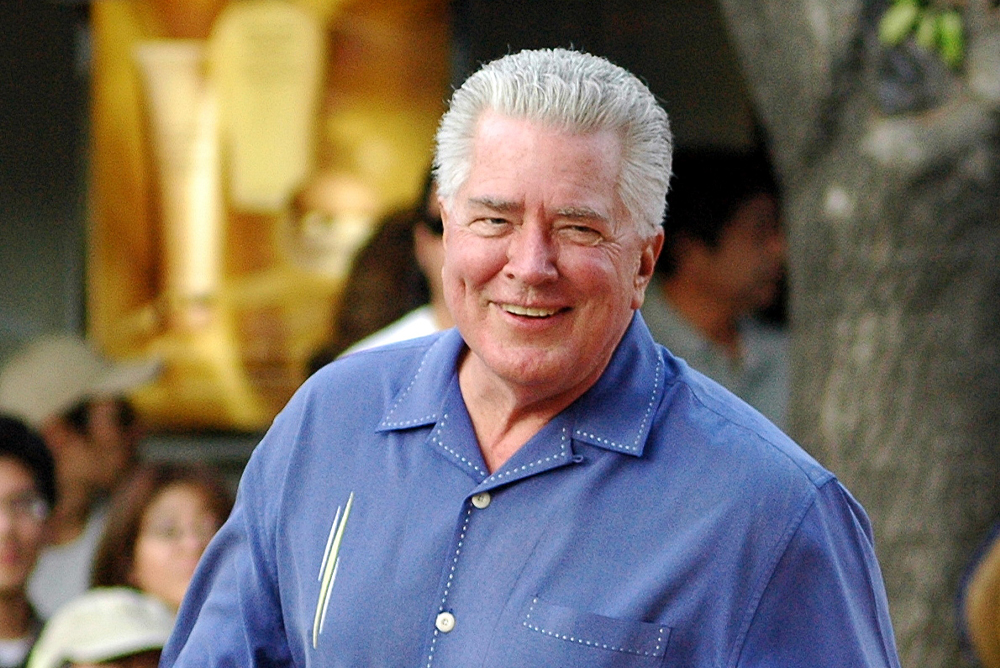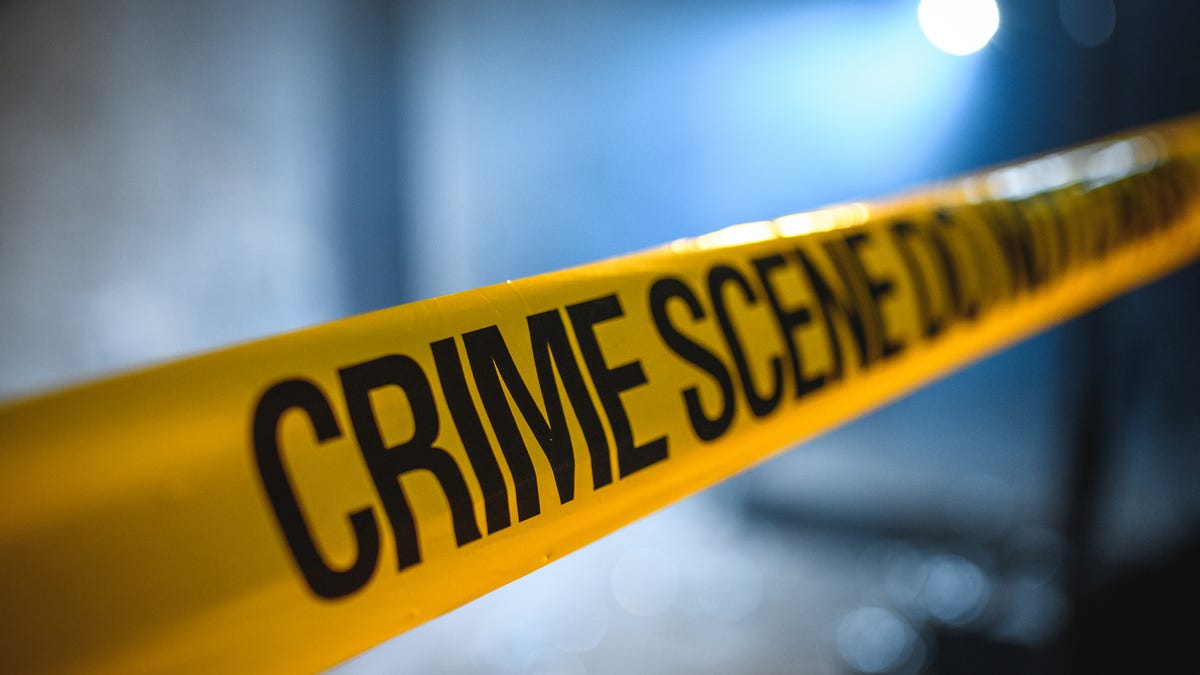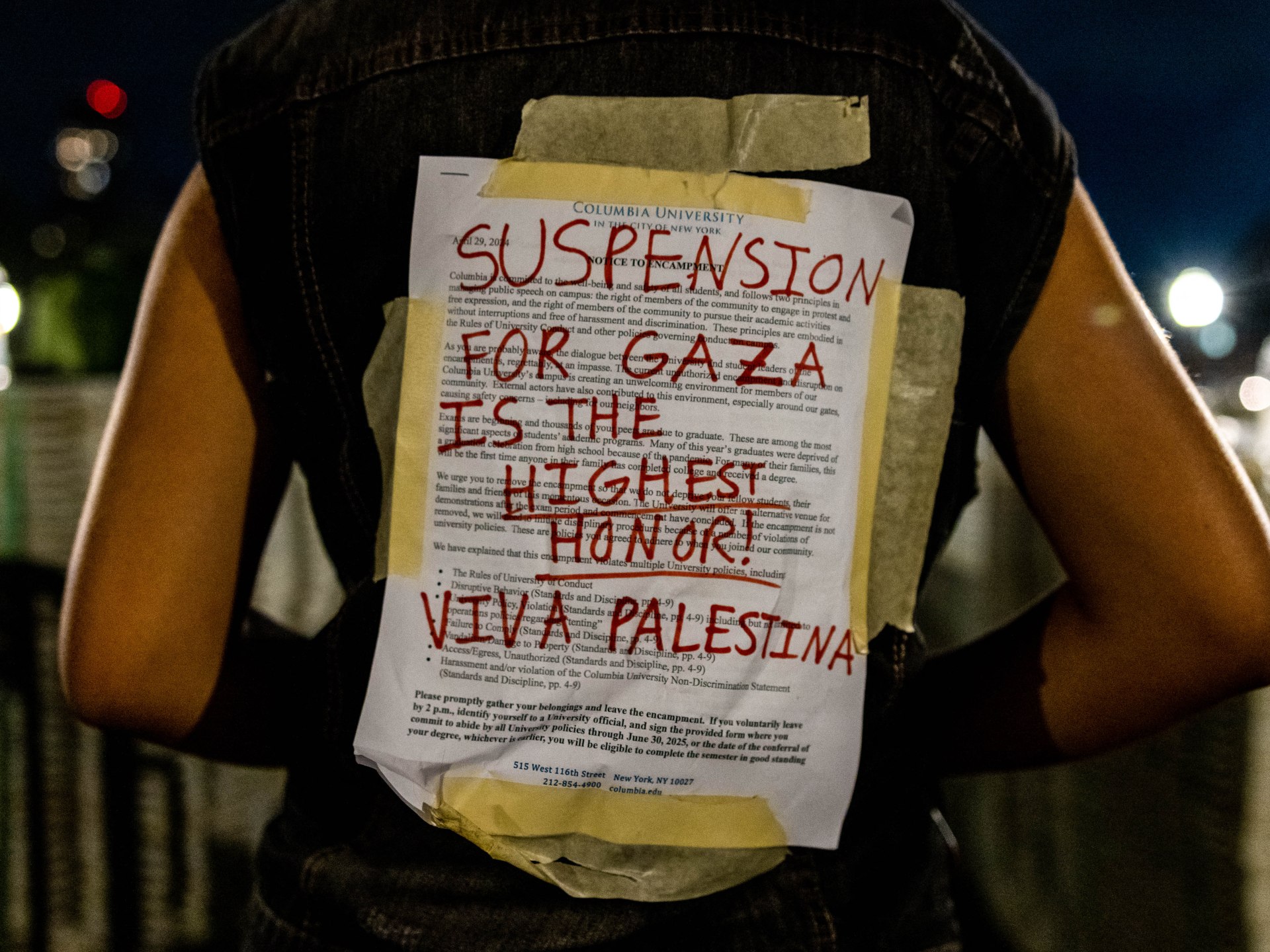California
Historic Torahs on loan around Southern California reunited in Fullerton for anniversary

Torah scrolls, once belonging to Jewish temples throughout Czechoslovakia, were reunited at Temple Beth Tikvah in Fullerton as the synagogue celebrated its 60th anniversary.
On loan to 19 Southern California temples, the scrolls were displayed after a ceremony that offered congregants from each synagogue messages about hope, history, and heartache.
The one-day event also commemorated the 60th anniversary of the Memorial Scrolls Trust, which serves as the guardian to more than 1,500 Czech Torahs that survived the Nazi occupation of the region and later the shuttering of synagogues under regimes that stifled the Jewish faith.
“What a wonderful celebration to share,” Jeffrey Ohrenstein, a London resident and chairman of the Trust, said at Sunday’s event showcasing the collection.
In 1964, the scrolls, each containing five handwritten books of the Hebrew bible, were donated to the Westminster Synagogue in London where the Trust was formed.
“Since then we have been distributing (them) to communities, organizations and synagogues around the world,” Ohrenstein said. “We’ve allocated some 1,400 scrolls to 1,300 communities and 1,000 of those are in North America.”
The Fullerton temple has three such scrolls, but only one of them is “kosher,” or in perfect condition to be used in an official manner, Temple Beth Tikvah Assistant Rabbi Miriam Van Raalte said.
Most of the Czech Torahs are from the 18th and 19th centuries, she said, “But there are some that are much older.”
“The use of these scrolls, either for reading in public or for using symbolically for show, evokes memories of Jewish history, the struggle for survival, and the continuity of the Jewish people,” said Van Raalte. “We let the congregation know that this is a scroll that faced extinction.”
During the Nazi occupation of Czechoslovakia, the scrolls and other Jewish artifacts were taken to the Jewish Museum in Prague, which had been established in 1906 and became a warehouse of treasures collected by the Germans. The vast inventory “was catalogued by Jews who were deported to concentration camps once the work was finished,” according to the Trust. “Unfortunately very few of them survived.”
Ohrenstein told the story of an art dealer who was looking to buy a gift for his wife nearly two decades after World War II. The dealer was brought to a destroyed synagogue outside of Prague. There he was shown a damp warehouse “full of Torah” scrolls.
Philanthropist Ralph Yablon bought the scrolls after learning of their existence from the art dealer. He then donated them to the Westminster Synagogue in London.
The synagogue’s rabbi addressed dozens of congregants at Temple Beth Tikvah via recorded video on Sunday.
Following the ceremony, the gathered Torahs were displayed on long bridge tables. People looked closely at the Hebrew lettering and gently ran their fingers over the worn wooden dowels holding the scrolls. The wooden pieces are call the atzei chayim, meaning “tree of life.”
Pedro and Laura Alamilla of Downey visited with their three children.
As they observed the Torahs, they were overcome with emotion, Pedro Alamilla saying, “We’re at a loss for words.”

California
A daring rescue to save an injured hiker in the California wilderness

Lemoore, CA — “It was December 5th, not a cloud in the sky,” recalls Kevin Depaolo, an adventurist who’s visited 49 out of 50 states in a van that he customized himself. “It was sort of the scenario that you’d expect something to go wrong, unfortunately.”
That scenario was a rock hounding trip high in the California wilderness between the Sierra Nevada and the Inyo Mountains. “It’s desolate. I was there for five days and I didn’t see a single person.” Fortunately, Depaolo wasn’t alone. He and a friend were digging for interesting rocks that lay beneath the surface near large boulders that have been sitting for thousands of years untouched. “We were digging and I sat back to rest and all of a sudden my friend yells ‘Kevin look out!’ and before I can even look up, this giant boulder just nails my entire body.”
I kept yelling, ‘you have to get it off! It’s killing me!
Depaolo was trapped. The boulder pushed him onto his back, crushing his pelvis and threatening to roll further down the hill. Depaolo’s friend quickly takes his pick axe, lodging it under the boulder to keep it from rolling further and injuring Depaolo even more. “I kept yelling, ‘you have to get it off! Its killing me!” Depaolo was able to free his left leg, revealing one of his major injuries, a severed artery that the boulder was applying pressure to keeping him from bleeding out.
“My friend then called for help, but my right leg remained trapped and that’s where we spent the next seven hours.” There’s only one road in and out of the area and where Depaolo was trapped, it took him and his friend two hours to hike there. The Inyo County Search and Rescue team that was dispatched to find Depaolo spent six hours on the phone with his friend to pin point their location. Depaolo recalls seeing a helicopter spot them and circling a few times, only to fly off. It was several hours later until help arrived.
“It was dark at that point, about 8pm, when I finally saw the headlamps coming over the ridge. The guys immediately started getting to work.” The Inyo County Search and Rescue team devised an unique pulley system to lift the 10,000lb boulder off Depaolo’s leg. Drilling two bolts into the boulder and a rope to an anchor drilled into a massive boulder down the hill, the Search and Rescue team was able to lift the boulder with the help of a high lift jack, a special tool used to free large off-road vehicles. Once Depaolo was free, the immense pain started to hit. “At that point we needed to get to the hospital. But we were in such a remote area, there’s no way they could carry me down the hill. We needed external help.”
The California Highway Patrol was originally tasked with airlifting Depaolo out, but once the sun went down, there was nothing they could do as their helicopters aren’t fitted for night rescues. Depaolo faced the possibility of spending the night on the mountain, where temperatures fall below freezing. Knowing that he may not make it through the night, Inyo County Search and Rescue made a call to the nearby Naval Air Station in Lemoore, where their elite Search and Rescue team is equipped for night rescues in their helicopter.
“The ground crew was able to send us an exact lat and long. There was nowhere safe to land. The only safe place was miles away.” HM2 Matthew Rector was the medical tech on the mission who repelled down to package up and lift Depaolo off the mountainside. From there it was a 45 minute flight to Community Regional Medical Center in Fresno, CA. It was there Depaolo learned the extent of his injuries. A severed femoral artery, a fractured pelvis in two places and dead tissue in his leg from the impact of the boulder which led to many surgeries and a skin graft.
Fast forward three months and Depaolo is recovering well. He’s able to walk and take short trips, including back to NAS Lemoore to meet his rescuers for the first time since seeing them in the Inyo Mountains. “Seeing those guys and interacting with them, they’re extremely cool guys. It was a life changing experience. I think about those guys almost every day of my life.” What’s next for Depaolo? “Its inspired me in a way that I want to give back and help people in the same way they were able to help me.”
Watch the show “9-1-1” at 8 p.m. ET/PT Thursdays on ABC.
California
Huell Howser Lives! | Connecting California

Zócalo is celebrating its 20th birthday! As part of the festivities, we’re publishing reflections and responses that revisit and reimagine some of our most impactful stories and public programs. Connecting California columnist Joe Mathews revisits Southern California author D.J. Waldie’s 2012 essay “The Darkness Behind Huell Howser” and considers why, over a decade after Howser’s death, the public TV’s great California chronicler retains such a hold on us.
“Do you know Huell Howser?”
I got that question recently while chatting with a counter guy at Erick Schat’s Bakery, which produces Dutch pastries and sheepherder bread in the Eastern Sierra town of Bishop.
It’s a question I get at least a couple times a year, in all different corners of California.
I suppose it’s a natural question. People might wonder if I, a longtime chronicler of California’s places, get asked if I know the public television reporter who took viewers into every little town and restaurant and museum, from Alturas to Zzyzx.
It’s a question that never ceases to amaze me. Or stump me.
Because the truth is that I can’t possibly know Huell Howser. And not just because I only met him a couple times. No one can possibly know Huell Howser anymore, because Huell Howser died 11 years ago, of prostate cancer, at age 67.
But the truth is also that people feel like they do know Huell Howser. Because he never really left us. His shows still air regularly on public TV stations in Southern California. And episodes of his California-exploring series—California’s Gold, California’s Green, Downtown, Road Trip with Huell Howser, and Visiting—still attract heavy traffic online.
Why does Huell Howser retain such a hold on us? The best answer to that question came from the Southern California author D.J. Waldie, in a Zócalo Public Square essay published shortly before Howser’s January 2013 death.
Waldie’s thesis was that Howser, in taking viewers to forgettable eateries and little-known places, was finding joy in the thing that Californians most cherish: our broken dreams.
Most people come to California, or grow up in California, dreaming of stardom or riches or invention or new and distinctive lifestyles. Instead, they end up sewing dresses in a little store in Tustin, or working at a dairy outside Turlock. You can feel pretty small doing that kind of work. But when Howser showed up, the public TV explorer in all his geeky ebullience, it made the life you settled for seem big.
When Howser showed up, the public TV explorer in all his geeky ebullience, it made the life you settled for seem big.
“Howser wasn’t just pitching the muchness of California, an abundance anyone should be able to see unaided,” Waldie wrote. “He was pitching the almost infinite otherness within the ordinary of California, particularly when California is considered with joy.”
Waldie wrote that Howser’s deep connection with the regular “folks” of California was not his joy but “the melancholy behind his fierce public niceness.” His TV tours could strike sad notes, especially when his questions revealed wonderful old things that no longer existed. The same relentless dynamism that produces the many wonders of California also destroys the established. Our sunny love of the novel coexists with darkness and loss.
Howser liked to say that his goal was to encourage Californians to embark on their own personal adventures around the state, and investigate the places all around them. Howser modeled that kind of exploration, with a curiosity about everything that showed how fiercely unprejudiced he was.
As Waldie wrote, Howser was not urging Californians to take “a harmless field trip” but rather to begin “an encounter with the differences that reside, intractable, in everyday life—real differences between people, conditions, ethnicities, and cultures that can only be accepted for what they are and mostly with a smile.”
I don’t look or sound like Howser—he was a handsome TV guy with the distinctive accent of his native Tennessee, while I’m a rumpled print guy and fourth-generation Californian. But I suspect I get the “Do you know Huell Howser?” question because my reporting method is so similar to his.
That method: modestly planned, thoroughly unrehearsed wandering—which also happens to be the most practical way to get to know California.
Because Californians are so informal and so flaky (as anyone who has ever invited people to a dinner party knows), I rarely bother to schedule a bunch of interviews in advance when I’m visiting a town. It works much better to show up unannounced, act friendly, and start asking respectful questions about what people do.
I also say, as Howser did, “wow” and “gee whiz” when people are showing me things—a rusting old motorbike, a piece of street art, a loaf of bread—that would seem less than amazing to someone less geekily Californian.
There is no greater flattery in the Golden State than to take an interest in what others do. Californians, whatever their occupation, are instinctive artists, and asking them about their business or their home or their flea market—as Howser did—often elicits detailed and thoughtful responses.
That’s what I was doing at Schat’s. I had been pressing the counter guy. What is that bread? Can I try a piece? What makes it taste so good?
His answer to my last question was perfect: The best bread comes from the baker most determined to make sure you never forget it.
California
Teen charged with murder of beloved California middle-school teacher

The boy was 15 at the time that 50-year-old Sergio Martin was shot dead in his home in Dinuba, California. Martin was a longtime Spanish teacher at El Monte Middle School.
A 16-year-old boy has been charged in the killing of a beloved middle-school teacher during a burglary in central California last year.
Officers found Sergio Martin, a 50-year-old teacher for the Cutler-Orosi Joint Unified School District, dead from multiple gunshot wounds in his home in Dinuba at around 3 a.m. on Nov. 6, 2023. At the time, police described the shooting as a random act of violence and said the suspect was not a former student of Martin’s.
The teenager was charged with murder and burglary, among other counts, the Tulare County District Attorney said Monday. The teen was arraigned in Tulare County Juvenile Court on Friday.
Under California law, the boy will be tried as a juvenile because he was 15 at the time of the killing. If convicted, he can only remain in custody until the age of 25.
Two young adults also charged in burglary
Two others were charged with burglary in connection to the crime, according to the district attorney’s office.
Jorge Arrieta, 21, and Joseph Garcia, 20, were charged with second-degree burglary and accessory. Arrieta is also charged with having stolen property, according to the prosecutor.
The two were arrested on Friday, with Arrieta remaining in custody and arraigned on Monday. Garcia was released on bail and is scheduled to return to court on May 22 for his arraignment.
USA TODAY was working to track down attorneys for Arrieta and Garcia for comment.
Martin loved vinyl records and the Dodgers
Martin taught Spanish at El Monte Middle School for 17 years. Following his death, students and teachers at the school posted dozens of notes with letters and pictures outside his classroom. One of them said, “I am sorry,” while another simply said: “We will miss you, Mr. Martin.”
The educator was a dedicated fan of the Los Angeles Dodgers, his colleague Chris Velasco told KFSN-TV in November.
Emilio Botello, one of Martin’s close friends, said he deeply cared about his parents and students and was enthusiastic about his vinyl record collection.
“Beyond his teachings and in the classroom, he’s affected many kids, but to adults that’s not that easy, it’s not that easy and he’s done that,” Botello told KFSN.
Contributing: Eric Woomer, Visalia Times-Delta
-

 Education1 week ago
Education1 week agoVideo: Dozens of Yale Students Arrested as Campus Protests Spread
-

 World1 week ago
World1 week agoShipping firms plead for UN help amid escalating Middle East conflict
-

 World1 week ago
World1 week agoEU sanctions extremist Israeli settlers over violence in the West Bank
-

 Politics1 week ago
Politics1 week ago'Nothing more backwards' than US funding Ukraine border security but not our own, conservatives say
-

 Politics1 week ago
Politics1 week agoDemocrats hold major 2024 advantage as House Republicans face further chaos, division
-

 Politics1 week ago
Politics1 week agoFetterman hammers 'a–hole' anti-Israel protesters, slams own party for response to Iranian attack: 'Crazy'
-

 World1 week ago
World1 week agoPeriod poverty still a problem within the EU despite tax breaks
-

 Politics1 week ago
Politics1 week agoA battle over 100 words: Judge tentatively siding with California AG over students' gender identification


























